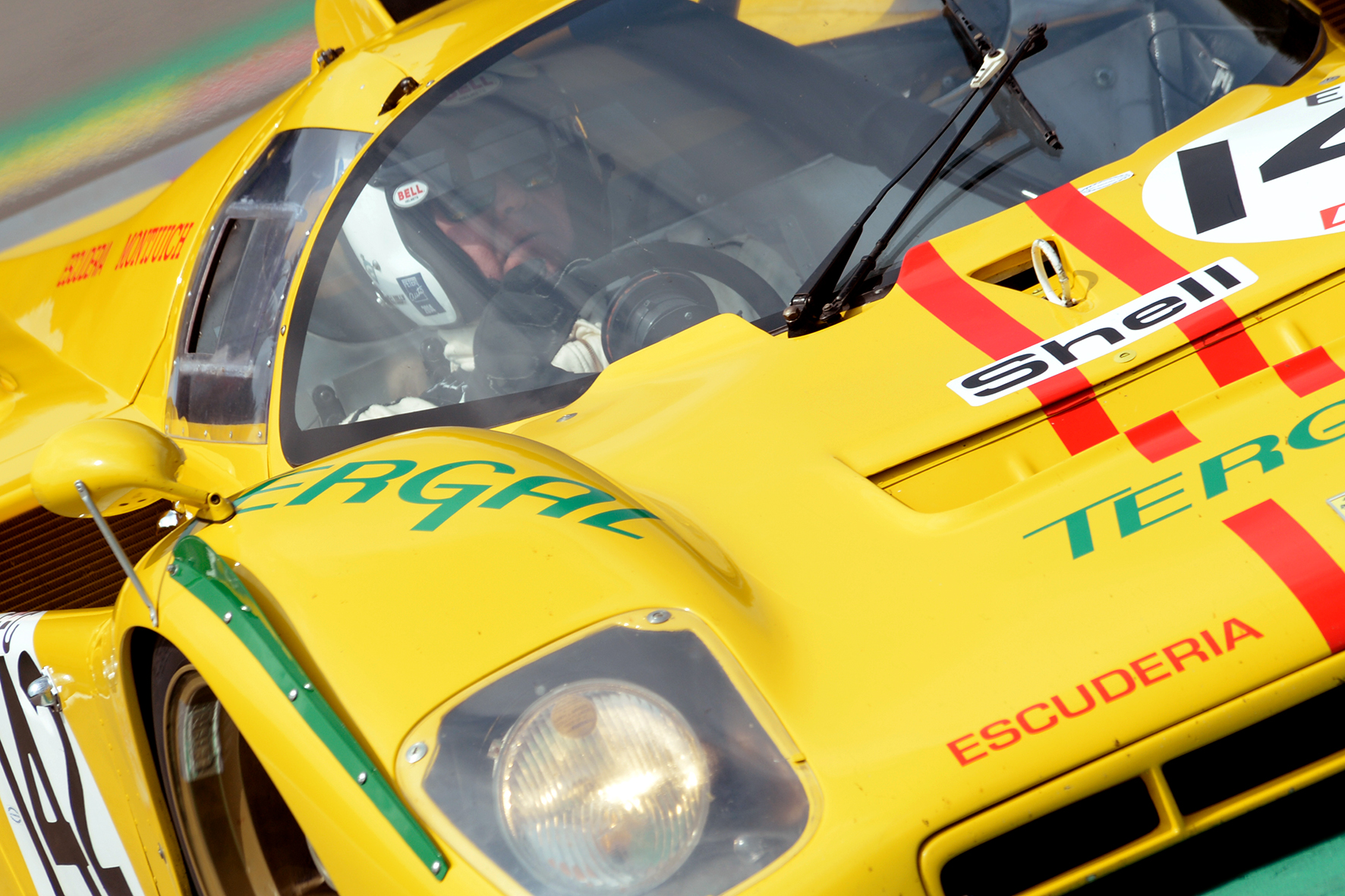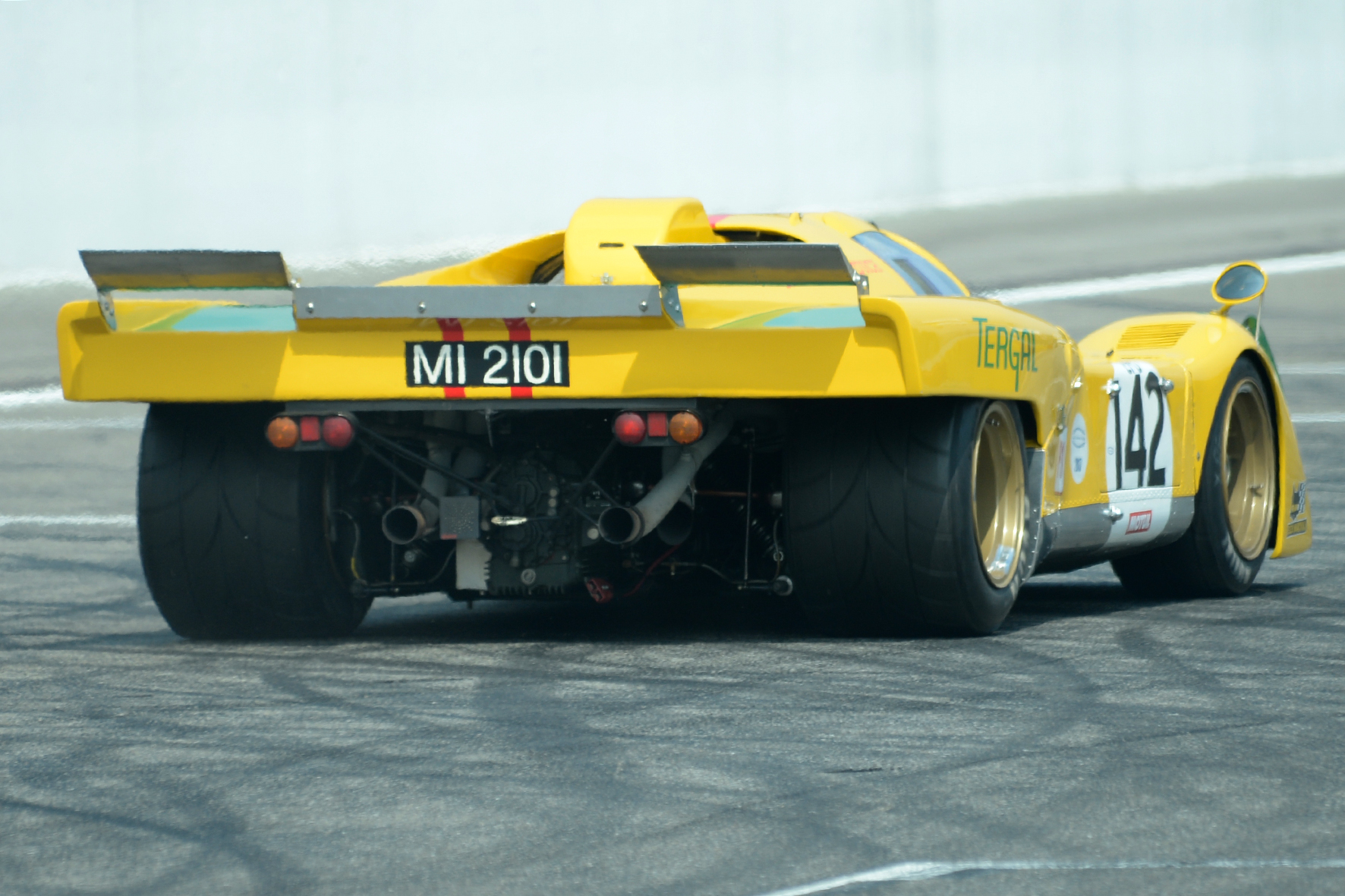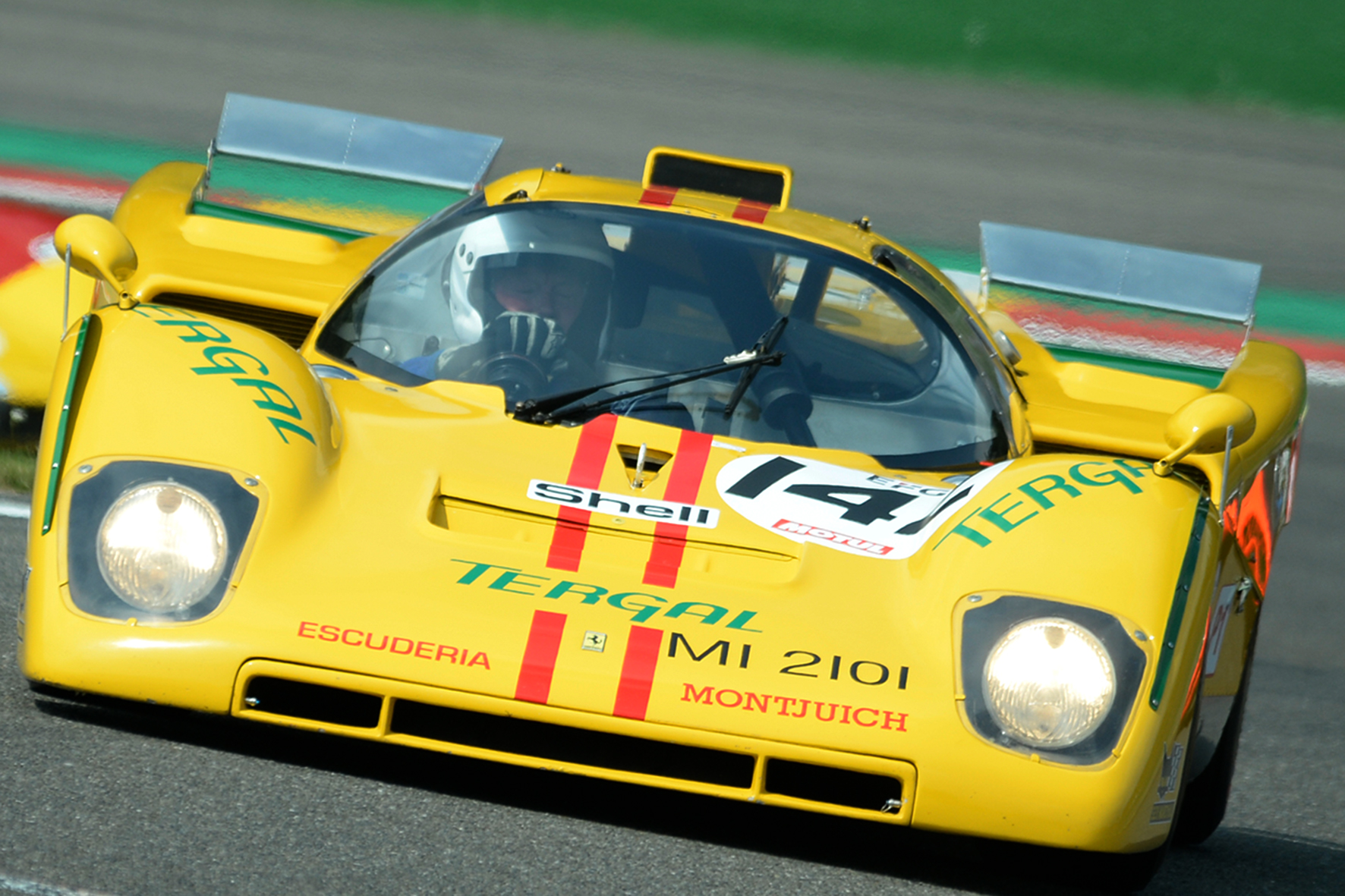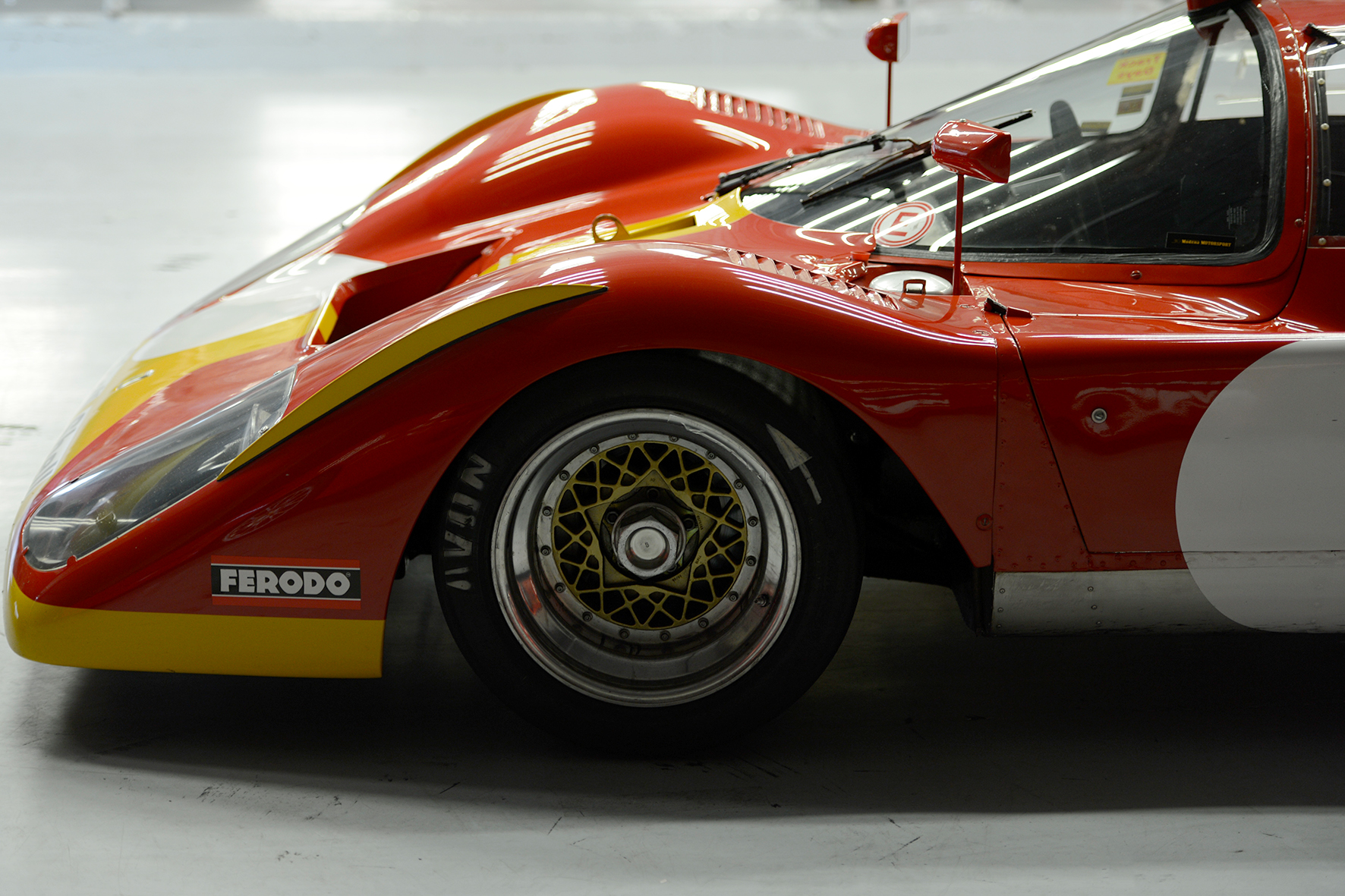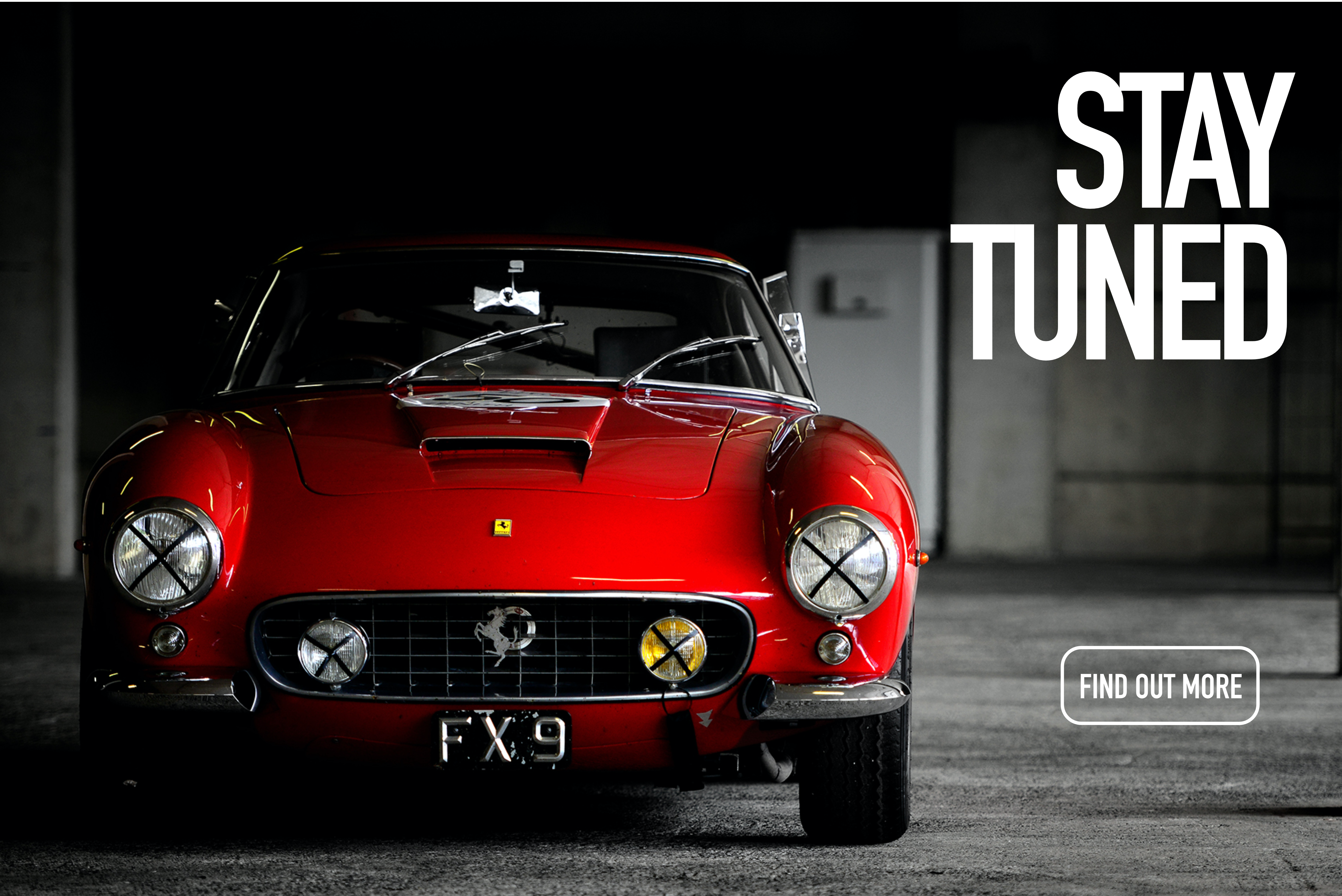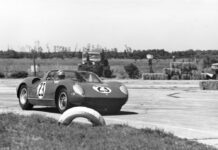It is all about money. It is today but it was also in the past. As the Scuderia Ferrari was beaten at the 24 hours race in Le Mans by the Ford Motor Company it was obvious that the three- litre Formula One based engines weren’t the right choice to win long-distance races anymore.
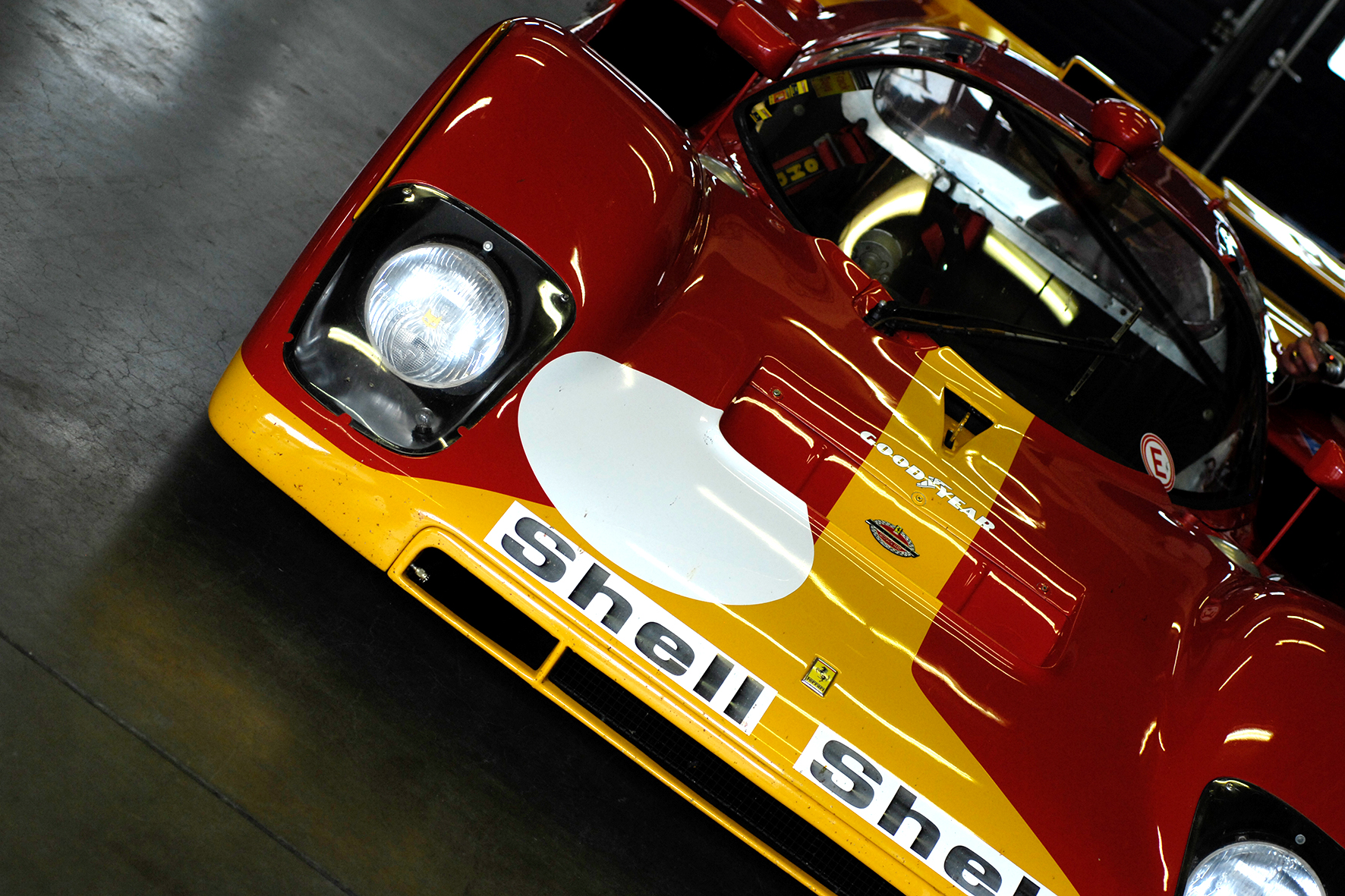
And in 1969 a new player came on stage. The Porsche factory decided to build 25 homologation cars, which were required by the CSI, to race under new regulations with a five-litre engine. Porsche was able to took the financial risk, because they had sold their race cars in the past very well to private teams. They could count on them because they gave them works support.

The Ferrari company struggling with big financial problems…
…in the late 1960’s, they needed money, they got it by selling part of their famous company to FIAT. It was usual for Ferrari to win the races were they entered, to win championships, they were the state-of-the-art racing team until Ford with the GT40 showing them their backlights.
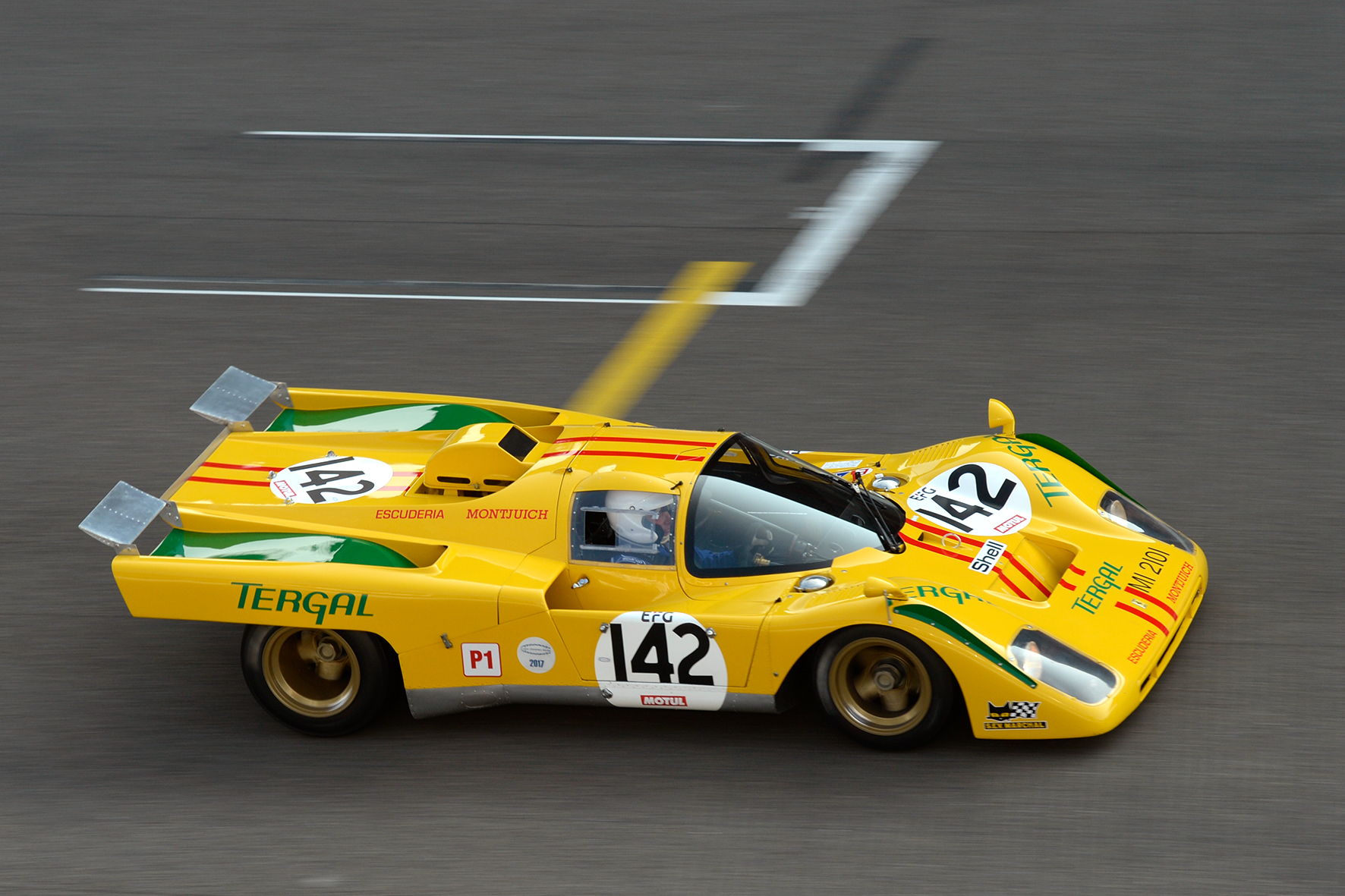
During 1969 the Scuderia Ferrari under the reign of the young Mauro Forghieri with a team of very talented engineers, such as Franco Rocci, Stefano Jacpani and Giovanni Marelli, developed a sports racing model to compete in the 1970 Group 5 Sports Car Championship, this was the 512 S model, built to battle with the Porsche 917. Of course it was much more difficult for the Scuderia to build a competitive car, because in opposite to Porsche, Ferrari was engaged in Formula One racing too. And winning the F1 world championship was the priority at this time.

The regulations required that twenty five examples of the model had to be built to achieve homologation, and in January 1970 Ferrari presented the requisite number of cars to FIA officials in Maranello for inspection. The motive power was a mid-mounted 5 litre V12 engine with Lucas indirect fuel injection, producing a claimed 550bhp at 8500rpm, coupled to a five speed + reverse transaxle. The body was available in either closed – Berlinetta, or open – Spider, configuration, and the fibreglass panels were mounted on a semi-monocoque chassis in aluminium with a supplementary steel tube frame. For the Le Mans 24 Hour Race a “coda Lunga”, long tail, body section was available, which was designed to provide greater aerodynamic efficiency on the long Mulsanne Straight.

The 512 S model ran through the 1970 season and its best result had been a victory in its second race in the 12 Hours of Sebring, this being a works entry driven by Andretti/Giunti/Vacarella.
A 512 S also won the non championship Fuji 200 Mile Race in Japan, and a 512 M version won the Kyalami 9 Hour Race in South Africa. Although there were little differences in performance between the 512 S and the Porsche 917, the latter had the greater reliability, which enabled it to take the Manufacturers’ Championship.

For the 1971 season, Ferrari concentrated on their 312 P(B) sports prototype, and left the 512 entries to the privateers, although they did offer a revised more aerodynamic body package. This was called the “M” package for “Modificato”, featuring a more wedge shape flatter profile. In the USA the Roger Penske team developed their own 512 M, chassis # 1040, which was the quickest 512 of all time, but like the regular cars didn’t achieve great success, with no 512 victories during the season.

The Porsche 917 was the better race car, a bit faster, a bit more competitive and more reliable. The Ferrari 512 S / M wasn’t that good, but in my opinion the outside shape is better, sharp, more rigid angular and more aggressive, it looks faster but it wasn’t. And, not to forget, the 512 S was a co-star in the great Le Mans motion picture in the hands of „Erich Staller“. Find out more about our photographer Ralph Lüker.
Ferrari 512 S / M: TECHNICAL SPECIFICATION
MODEL 512 2 / M
TYPE Sport Prototype
YEAR OF PRODUCTION 1969
TOTAL NUMBER OF BUILD CARS 25
ENGINE rear, longitudinal 60˚ V12, light aluminum cylinder block and head
BORE AND STROKE 87 mm x 70 mm
CUBIC CAPACITY CYL. / TOTAL 416,13 cc / 4993,53 cc
VALVE ACTUATION DOHC per bank, 4 Valve per cylinder
FUEL FEED Lucas indirect injection
IGNITION electronic, single spark plug per cylinder
TRANSMISSION Multi plate clutch, 5-speed + reverse
HORSEPOWER 550 bhp at5 8500 rpm
CHASSIS aluminium semi-monocoque
BRAKES Discs all around
SUSPENSION FRONT independent wishbones, coil springs, telescopic shocks, anti-roll bar
SUSPENSION REAR independent wishbones, coil springs, telescopic shocks, anti-roll bar
WHEELBASE 2400 mm
LENGTH 4060 mm
WIDTH 2000 mm
HEIGHT 972 mm
TRACK FRONT / REAR 1518 mm / 1511 mm
WEIGHT WITHOUT FUEL 840 kg
FUEL TANK 2 x 120 litre
MAXIMUM SPEED 340 km/h





